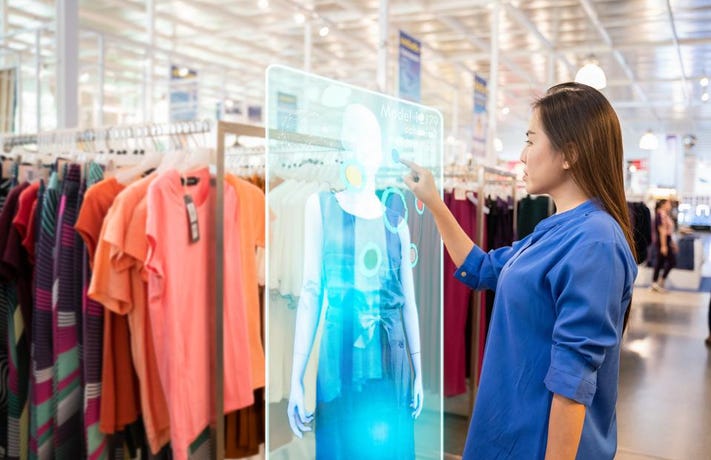The developments that occur in retail technology have a substantial effect on the way we shop. Everything from how we first enter a store to our method of checkout has the potential to be altered or redefined by the appearance of a new gadget or software. Over the previous decades, such developments may seem rather sparse, but when considering the implemented technology of the most recent years, it is clear that progress is relative.
It now seems that we are in an age of retail defined by technology, with certain retailers leading the way for innovation. No longer are improvements limited to the security of a building or the speed of transactions, now the checkout is altogether being eliminated, with purchases being made automatically to one’s own phone.
A New Reality
Augmented and Virtual Reality experiences (AR and VR respectively) are beginning to appear more often within high street stores. We might now be familiar with brands such as IKEA and Argos allowing us to visual products in our living spaces through AR means via their individual apps. This technology is now being more widely implemented into stores, enabling customers to engage with products virtually.
For example, shopping for clothes has historically required a changing room, as most customers will want to experience the fit of an outfit before committing to a purchase. AR technology can improve upon this experience by allowing customers to experience different garments, and their various styles, without the flick of a wrist. Personal devices can be used to support such experiences but some high street retailers are preferring to install smart mirrors, which serve as interactive ‘changing rooms’.
The End Of Checkouts
Stores have always been designed with shop shelving for products, space for advertisements, and, of course, an area whereby customers can purchase their chosen products. As many will have already encountered, the modern checkout experience has begun to change, with a number of facilities being replaced with ‘self-service’ checkouts that eliminate the need for human operation while increasing efficiency.
Now, however, these are already beginning to feel an archaic perception with leading retailers, such as Amazon, working to remove the need for a checkout altogether. With only a mobile device and an account, customers can enter these modern concept stores, stores that do already exist, and choose their items from a shelf before exiting the store. Through a system of cameras and software, the retail store assesses the items taken by a customer and chargers their account accordingly.
Smart Storage
A large part of retail management has been the ordering of products. Typically, this responsibility has fallen upon the shoulders of store management, individuals who are tasked with monitoring stock levels and demand, then placing orders accordingly. However, AI systems are now being put in place. These systems not only remove the need to perform such tasks, discerning low stock and placing orders when necessary, but can even go as far as to predict the shopping habits of target demographics.
To better understand how lighting can be used to change retail design as well, please see the infographic below.
Provided by Dubak Electrical Group – expert industrial electrical contractors


Comments are closed.